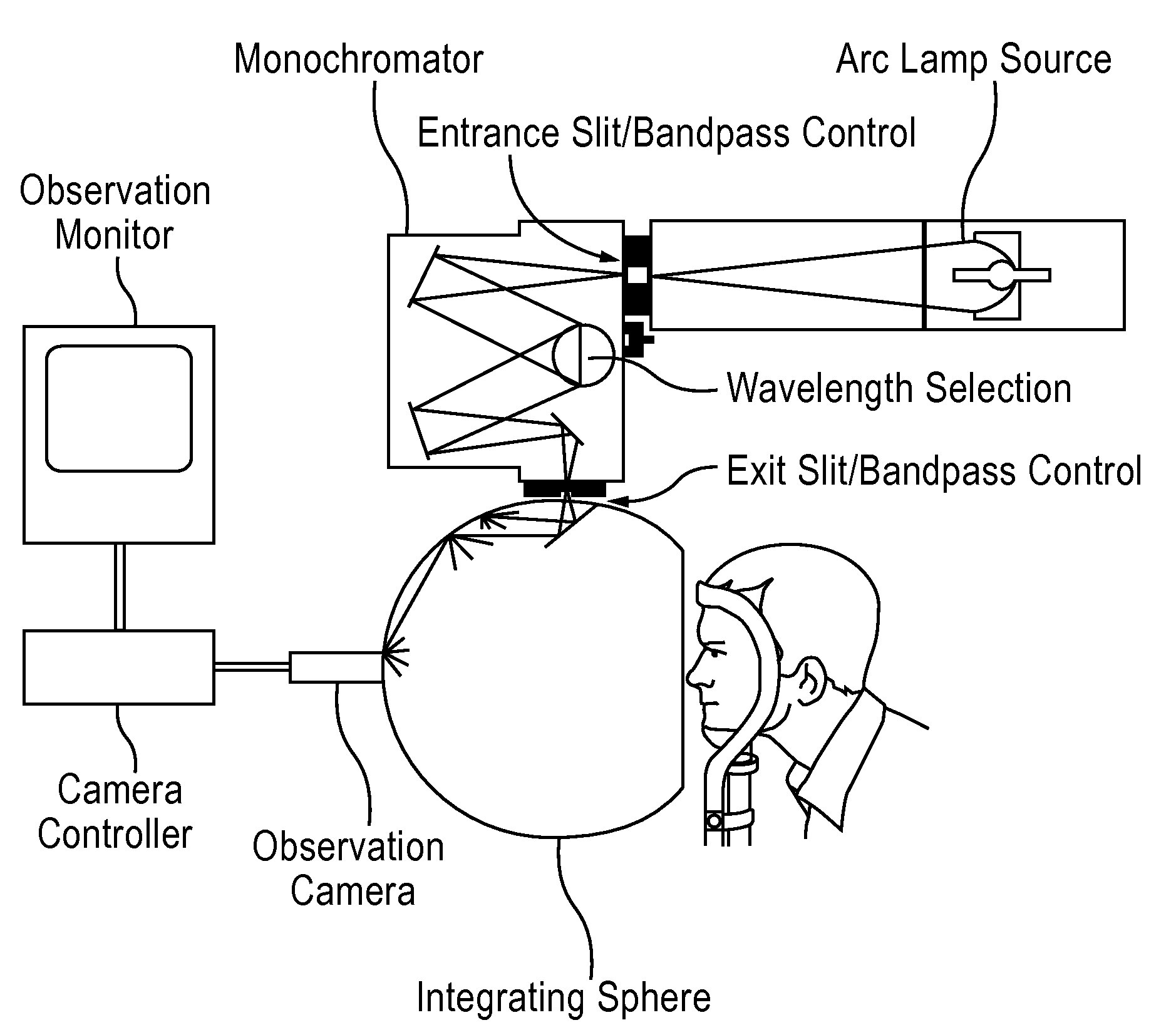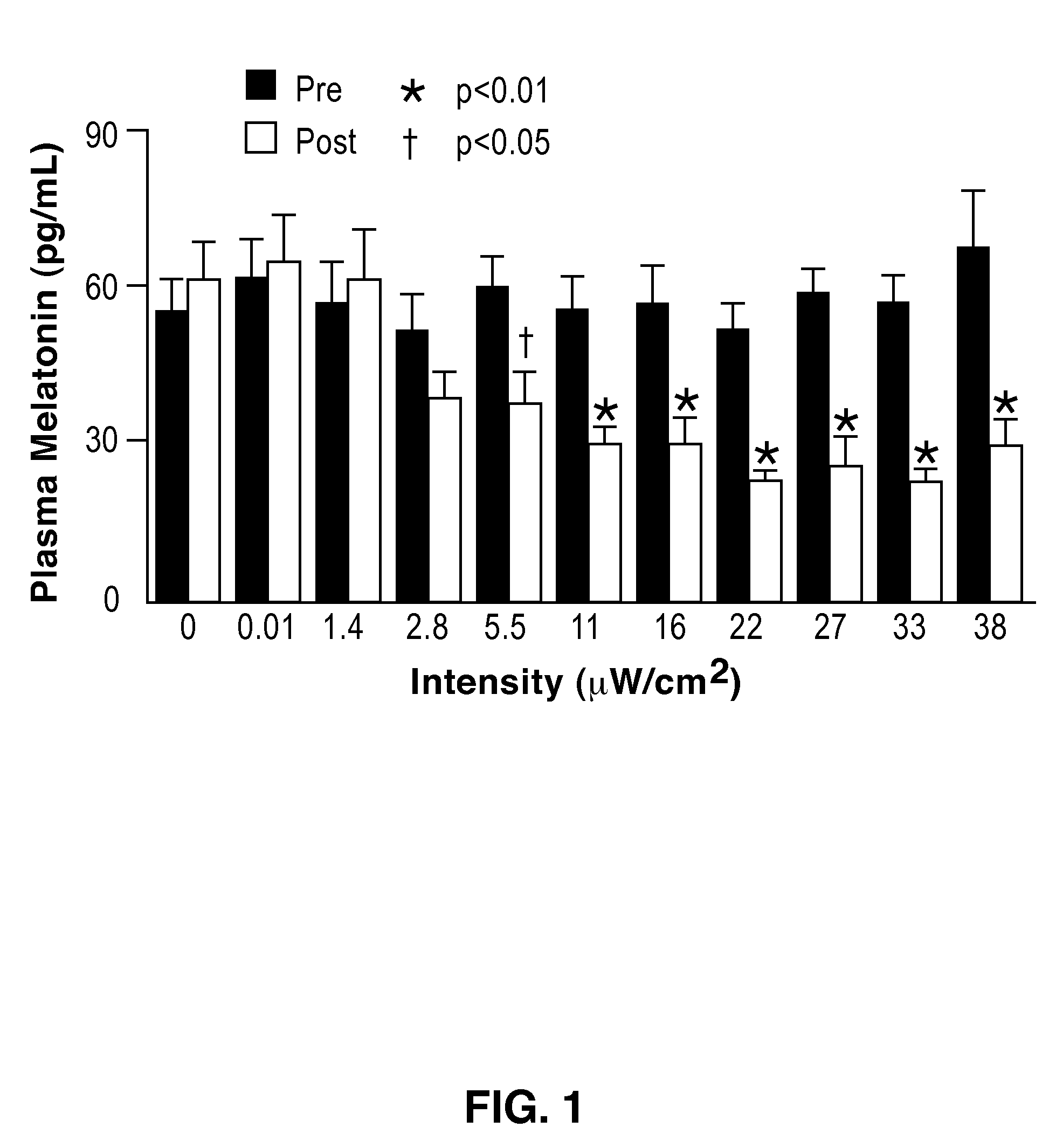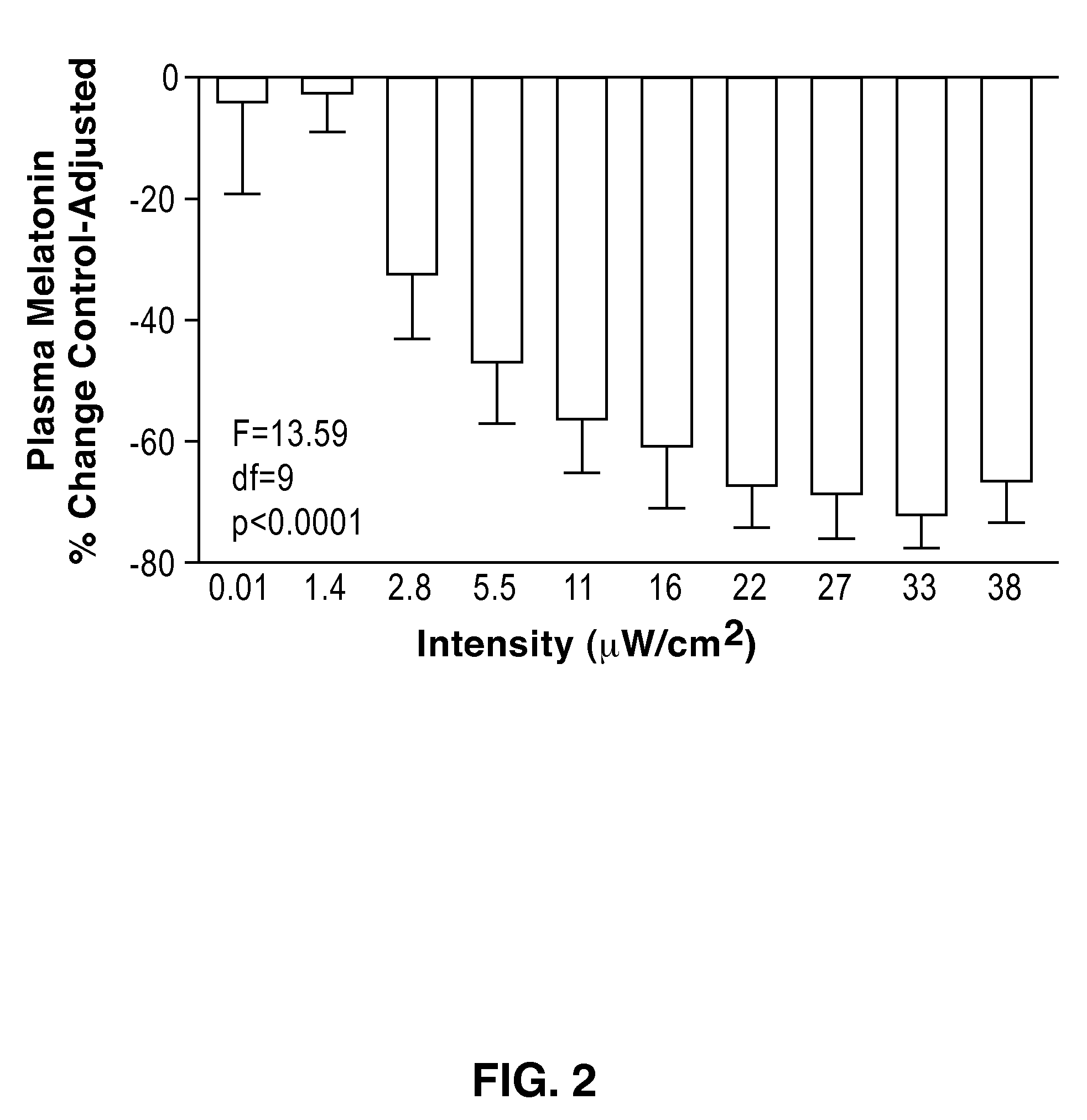Photoreceptor system for melatonin regulation and phototherapy
a photoreceptor and photoreceptor technology, applied in the field of neuronal, neuroscience, endocrinology and light systems, can solve the problems of lack of functional data confirming the direct role of circadian photoreceptors, reduced alertness on the job, and reduced sleep quality after work, so as to achieve accurate quantification of electromagnetic radiation
- Summary
- Abstract
- Description
- Claims
- Application Information
AI Technical Summary
Problems solved by technology
Method used
Image
Examples
Embodiment Construction
[0052]The science of photobiology involves the study of how the infrared, visible and ultraviolet portions of the electromagnetic spectrum influence biological processes. There are two broad categories of light measurement techniques: radiometric and photometric. Each measurement technique has its merits and drawbacks relative to circadian regulation, neuroendocrine regulation and light therapy. Radiometry is based exclusively on the physical properties of light—its energy and wavelength. A radiometer measures the radiant power of a light source over a defined range of wavelengths. Radiometers can be configured to measure different bandwidths across the electromagnetic spectrum. The wavelengths within the designated bandwidth can be detected equally, or they can be filtered for differential sensitivity across the various wavelengths.
[0053]In contrast to radiometry, photometry is based on the selective responsiveness of the human visual system. A photometer is simply a radiometer tha...
PUM
 Login to View More
Login to View More Abstract
Description
Claims
Application Information
 Login to View More
Login to View More - R&D
- Intellectual Property
- Life Sciences
- Materials
- Tech Scout
- Unparalleled Data Quality
- Higher Quality Content
- 60% Fewer Hallucinations
Browse by: Latest US Patents, China's latest patents, Technical Efficacy Thesaurus, Application Domain, Technology Topic, Popular Technical Reports.
© 2025 PatSnap. All rights reserved.Legal|Privacy policy|Modern Slavery Act Transparency Statement|Sitemap|About US| Contact US: help@patsnap.com



